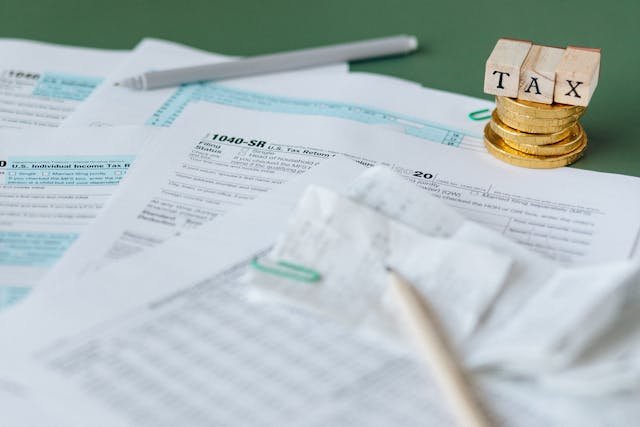
VAT Refund
A VAT Return is an official document that a taxable person must complete and submit to the Federal Tax Authority (FTA) at regular intervals. It details:
- Output Tax Due: The VAT charged on sales and other outputs.
- Input Tax Recoverable: The VAT paid on purchases and other inputs that can be reclaimed.
- Additional Required Information: Any other details necessary for compliance as specified by the FTA.
In this guide, we refer to this document as the “VAT Return.” It must be submitted online through the FTA portal. The VAT Return can be filed either by the taxable person directly or by an authorized representative, such as a tax agent or legal representative.


Tax Period:
A Tax Period is the timeframe for which VAT is calculated and paid.
- Standard Tax Period: Typically, this is a three-month period ending on a date determined by the Federal Tax Authority (FTA).
- Alternate Tax Periods: The FTA may assign a different Tax Period for certain groups of taxable persons. For example, some businesses may need to file VAT returns monthly instead of quarterly.
- Adjustment Request: Taxable persons assigned the standard Tax Period can request that it end on a specific month. The FTA may approve this request at its discretion.
VAT Return Filing Date:
The VAT Return must be submitted to the FTA no later than the 28th day following the end of the Tax Period, or by another date specified by the FTA. Any payment due to the FTA must also be made by this deadline.
Understanding Tax Liability
Tax Period
A Tax Period is the specific timeframe for which VAT is calculated and paid.
- Standard Tax Period: Typically, this is a three-calendar-month period ending on a date set by the Federal Tax Authority (FTA).
- Alternate Tax Periods: The FTA may designate a different Tax Period for certain taxable persons. For example, some businesses might be required to file VAT returns on a monthly basis instead of quarterly.
- Request for Adjustment: If assigned the standard Tax Period, a taxable person can request to end the period in a specific month. The FTA may approve this request at its discretion.
VAT Return Filing Deadline:
The VAT Return must be submitted to the FTA no later than the 28th day following the end of the Tax Period, or by another date specified by the FTA. Any payment due must also be made by this deadline.

Below are some key terms with respect to the operation of VAT, and how these could impact a Taxable Person’s tax liability.
Output Tax is the VAT that a taxable person calculates and adds to the price of goods and services provided once they are VAT-registered. This tax generally applies to supplies made to other parties. However, there are specific situations where VAT must also be charged on supplies considered to have occurred for VAT purposes or on supplies subject to reverse charge provisions.
The obligation to account for output tax arises at the tax point of the supply, which is the date when the supply is made. After this date, the taxable person must report the output tax in the VAT Return for the corresponding Tax Period.
Input Tax refers to the VAT added to the price of goods or services when purchased by a recipient. If the recipient is VAT-registered, they may be eligible to recover this input tax from the Federal Tax Authority (FTA), provided the following conditions are met:
- Tax Documentation: The taxable person must have received and retained a tax invoice or other documentation that clearly shows the VAT amount on the supply or import.
- Payment: The VAT amount must be paid, or intended to be paid, either in full or partially. If only part of the VAT is paid, the recoverable input tax will be limited to that paid amount.
Once these conditions are satisfied, the taxable person can claim the input tax recovery by including the amount in the relevant VAT Return as an input tax deduction.
A registered person’s tax liability is the net amount payable or refundable to the Federal Tax Authority (FTA) for a given Tax Period. This is calculated as follows:
Tax Liability Calculation: It is the difference between the output tax (VAT charged on sales) and the input tax (VAT paid on purchases) for the same Tax Period.
- If Output Tax > Input Tax: The taxable person must pay the difference to the FTA.
- If Input Tax > Output Tax: The taxable person is entitled to a refund from the FTA for the excess amount.
Filing VAT Returns
For each Tax Period, a Taxable Person will be required to submit a VAT Return which contains details regarding the supplies made or received by the Taxable Person. With respect to sales and other outputs, the Taxable Person will need to report:
Sales and Outputs:
- Standard Rate Supplies: Report supplies of goods and services subject to the standard VAT rate, broken down by Emirate.
- Tourist Tax Refunds: For retailers providing tax refunds under the Tax Refunds for Tourists Scheme, include details of these refunds.
- Reverse Charge Supplies: Report supplies received that are subject to the reverse charge provisions.
- Zero-Rated Supplies: Include supplies of goods and services subject to the zero VAT rate.
- Exempt Supplies: Report supplies that are exempt from VAT.
- Imported Goods: Detail goods imported into the UAE and declared through UAE customs.
- Adjustments on Imports: Include any adjustments related to imported goods declared through UAE customs, if applicable.


Purchases and Inputs:
- Standard Rate Purchases: Report purchases and expenses subject to the standard VAT rate for which input tax recovery is sought.
- Reverse Charge Purchases: Include any supplies subject to the reverse charge mechanism where input tax recovery is sought.
The VAT Return will reflect the net VAT position by netting off the VAT charged on outputs against the input tax recoverable. The resulting figure represents the VAT amount payable to the FTA or the refund due.
For information on new company VAT registration, visit VAT Registration UAE.
